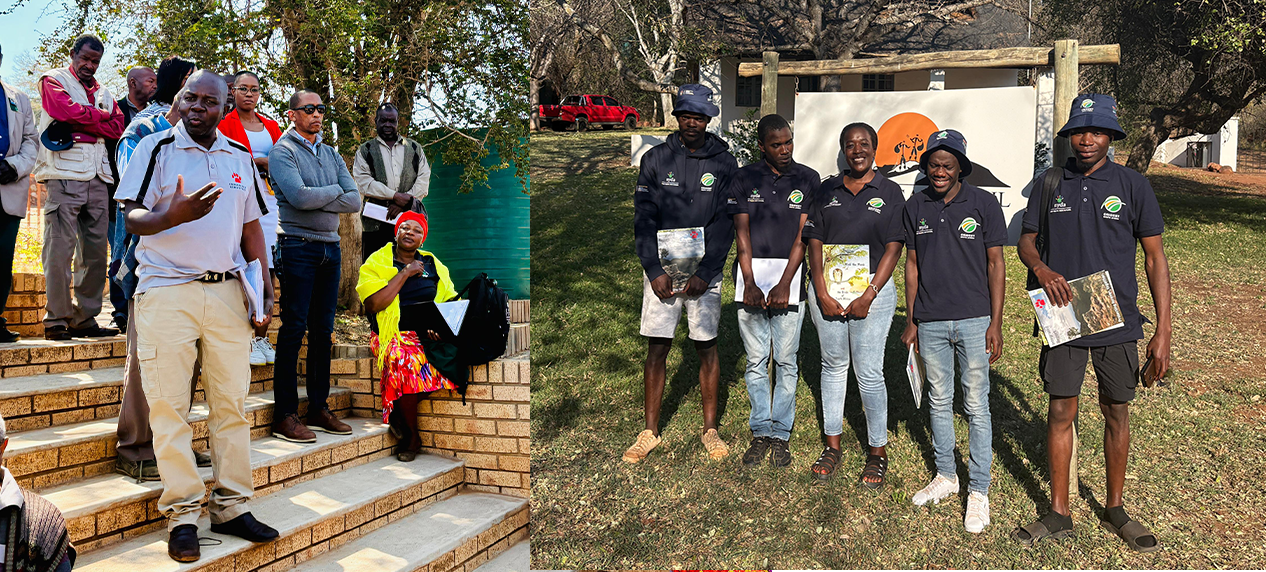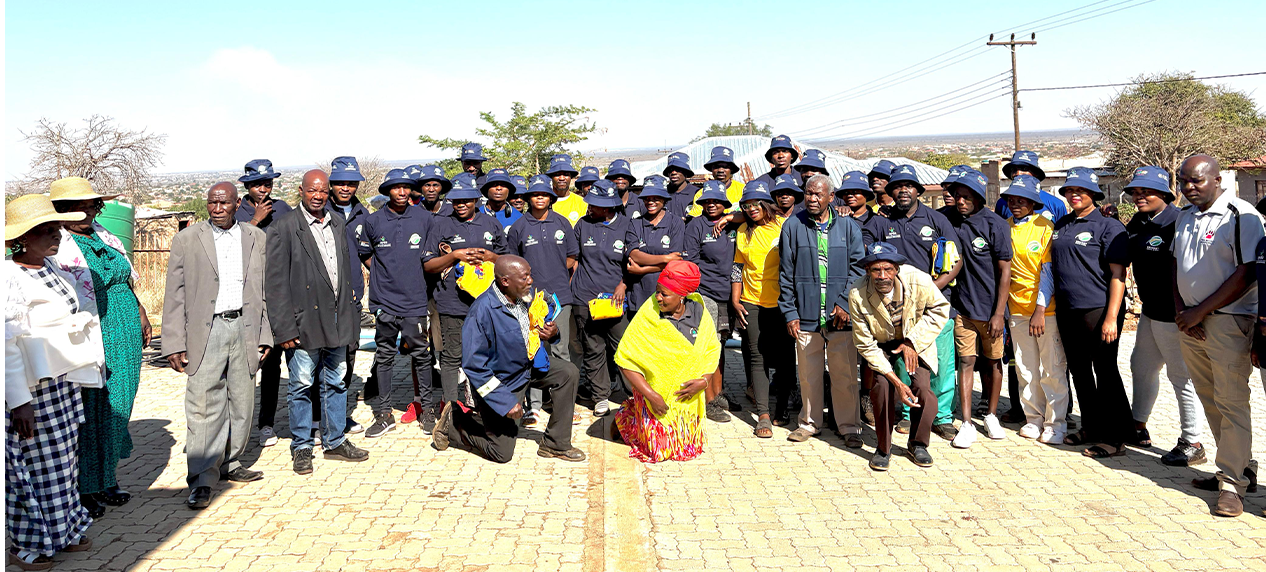Conservation, Cricket and Youth Development
By Joseph Razwinani, Medike Nature Reserve and Hospitality Manager

Left: Joseph addressing members of the local leadership, community and future cricketers. Right: cricket beneficiaries
At the end of August, a significant cricket development initiative was officially launched for underprivileged rural communities located adjacent to the Medike nature reserve.
This landmark programme is a collaborative effort between Cricket South Africa (CSA), the National Youth Development Agency (NYDA), and the Endangered Wildlife Trust’s Medike Nature Reserve. The initiative directly helps to reduce poverty, develop skills, and empower young people. This fits well with the EWT community outreach programme and government aims for service delivery, social unity, and giving youth valuable job skills.
The core objectives extend beyond cricket. It also aims to link sports development with conservation, eco-tourism, and broader community upliftment. Beyond job skills, it tackles unemployment directly and offers ways to avoid social problems like substance abuse and crime, while we get to expose the youth to an alternate, healthy environment on Medike.
Cricket SA has established 70 hubs countrywide, and one of its hubs is in the three villages adjoining the Medike nature reserve—Midoroni, Maebani, and Tshikhwarani. CSA has committed R630,000 in stipends for the EWT hub over a six-month period. Each of the 75 beneficiaries, who are unemployed youth between the ages of 18 and 35, receives a monthly stipend of R1,400.00.
The beneficiaries will be trained in umpiring and scoring alongside additional skills like administration, computer literacy, electronic reporting, payroll management, event organisation, and problem-solving.
The EWT and CSA will continue identifying training needs for beneficiaries and educate them about the importance and value of the biodiversity in the Soutpansberg region.
Interestingly, three beneficiaries, Andani Mahanelo, Dungelo Maliaga and Portia Maliaga, who had earlier been trained by PIC as Health and Safety representatives, have been absorbed into the cricket initiative as first aiders, helping to develop their skills as they give back to the local community. Another five beneficiaries who have shown an interest in eco-tourism joined Catherine Vise, Soutpansberg Protected Area manager, on a training hike during the weekend.
During the launch, the EWT highlighted the significance of linking cricket and the youth with conservation, positioning the initiative as a unique model for rural development.
The local ward councillor, Ishmael Madimabi, commended the programme’s potential in combating unemployment and substance abuse among young people. He also acknowledged the role of the EWT in attracting partners such as CSA to uplift local communities, and pledged his support to work with Medike Nature Reserve to improve the access road to the reserve to further enhance tourism potential. Traditional leaders endorsed the initiative and committed to overseeing its implementation at the village level.
CSA has undertaken to build modern cricket facilities at Midoroni village next year. This will allow them to host inter-provincial matches, which will bring visitors and help expand the local tourism economy. CSA aims to take on 450 beneficiaries from across the country to become trainers for new participants in this programme. This will create lasting jobs and ensure the continued use of the skills learnt.
This all-round approach, which relies on strong teamwork between CSA, local traditional leaders and the EWT, uses sport development not just for fun; it is a powerful way to improve the communities economically while conserving the environment, making it a unique model for transforming rural areas.

Cricket Initiative Group
